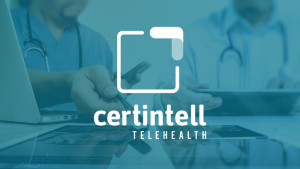The CMS Innovation Center announced a new alternative payment model, the Community Health Access and Rural Transformation (CHART) Model on August 11th in an effort to improve rural health outcomes and decrease disparities. CMS says with 1 in 5 people in the U.S. living in rural areas, these areas need a community-based solution that is voluntary, fully-customizable and builds on previous successes.
The CMS CHART Model has four overarching goals:
- Improve access to care in rural areas
- Improve quality care and health outcomes for rural patients
- Increase the adoption of alternative payment models (APMs) by rural providers
- Improve financial stability for rural providers
Applicants can pick between two pathways: The Community Transformation Track or the ACO Transformation Track
Community Transformation Track:
This track will select 15 award recipients and borrows ideas from the Maryland Total Cost of Care Model and the Pennsylvania Rural Health Model. These recipients will be called Lead Organizations. Those eligible to be a lead organization include:
- State Medicaid Offices
- State Offices of Rural Health
- Local Public Health Departments
- Independent Practice Associations
- Academic Medical Centers
- Health Centers
These recipients will receive up to $5 million over the course of the pre-implementation period and the six performance periods. These lead organizations will partner with community members or organizations to create a Transformation Plan, a strategic guide on how to implement action. They will review and update these plans annually.
Lead Organizations will also select participant hospitals to partner with, however, FQHCs and Rural Health Clinics are not eligible to be a participant hospital under the CHART model. For participant hospitals, CMS will replace the fee-for-service reimbursement with bi-weekly payments equal to the annual capitated payment amount during the course of the performance period.
Participants are required to report under three quality care measures:
- Chronic conditions
- Readmissions
- Patient Experience
They can then choose three out of four population health measures to implement:
- Substance Use
- Maternal Health
- Chronic Conditions
- Prevention
ACO Transformation Track
Under this track, CMS will provide 20 ACO awardees with advanced shared savings payments to encourage participation in the Shared Savings Program. CMS says this is ideal for rural providers who want to undertake total cost of care accountability for their communities.
This is an effort to advance two-sided risk models, where ACOs share a percentage of savings from quality with Medicare, but are also responsible for sharing in losses.
ACOs can received these payments in one of two ways:
- One-time upfront payment to participate in 5-year Shared Savings Program agreement period
- Prospective per beneficiary per month (PBPM) payment for up to 24 months (two years)
The amount of payment will depend on the level of risk the ACO assumes and the number of rural beneficiaries assigned to it.
If an ACO under CHART does not produce sufficient savings they will be required to pay back CMS.
CMS CHART Model Flexibilities:
The model introduces many waivers and flexibilities under both tracks to enhance the patient experience. Under the Community Transformation Track, these include:
- Skilled Nursing Facility (SNF) 3-day inpatient stay rule waiver
- In-person care management home visits
- Providing patient transportation
- Programs designed to address patients’ social determinants of health
- Patient gift-card rewards for chronic disease management
Similar flexibilities are offered under the ACO track as well.
CHART Telehealth Expansion
Both tracks offer telehealth flexibilities. While it’s still unclear what all the expansion of telehealth will include under this model, the Center for Connected Health Policy (CCHP) says CHART appears to:
- Provide rural health systems and providers with the financial support to adopt telehealth platforms and expand availability of telehealth services
- Extend geographic limitations and originating site waivers to ACO Transformation Track awardees under Shared Savings Program authority
- Enable ACOs to coordinate care through telehealth, including remote patient monitoring
- Enable rural providers to conduct home visits for evaluation and management using telehealth
- Extend at least some of the telehealth expansions made during the public health emergency.²
CHART Timeline:
The portal for the Community Transformation Track is open now and will remain open through late winter 2021, with awardees being selected in the spring. The pre-implementation period is from July 2021-June 2022, with the performance period ranging from July 2022-June 2028.
For the ACO track, the portal for applications will open in Spring 2021, with a deadline of summer 2021. CMS will select awardees in fall 2021. The performance period will range from January 2022-December 2026
For more information, go to the CHART model website.
SOURCES:
¹ Center for Medicare and Medicaid Services. “Community Health Access and Rural Transformation (CHART) Model Model Overview Webinar.” Innovation.Cms.Gov, Aug. 2020, innovation.cms.gov/media/document/chart-model-overview-webinar-slides.</p;>
² Center for Connected Health Policy. “Community Health Access and Rural Transformation (CHART) Model CCHP Fact Sheet.” Cchpca.Org, Aug. 2020, www.cchpca.org/sites/default/files/2020-08/CHART%20Fact%20Sheetfinal_0.pdf.</p;>



